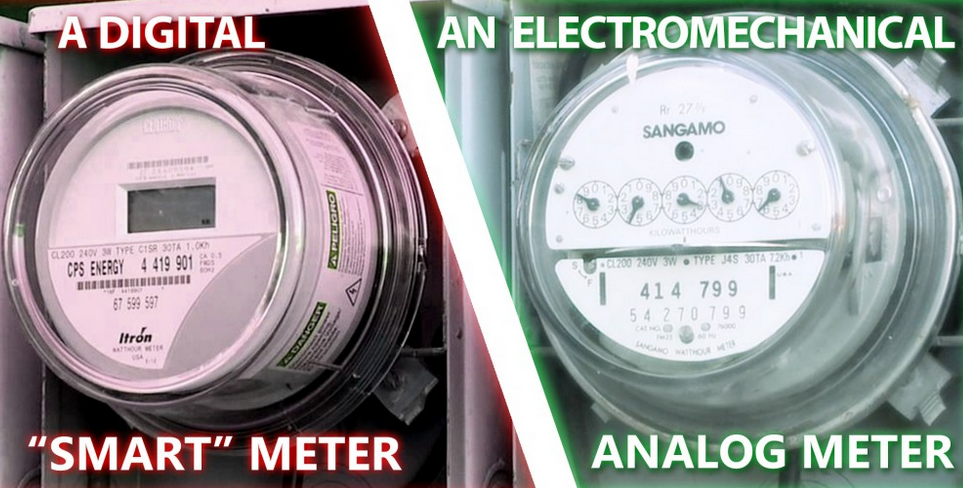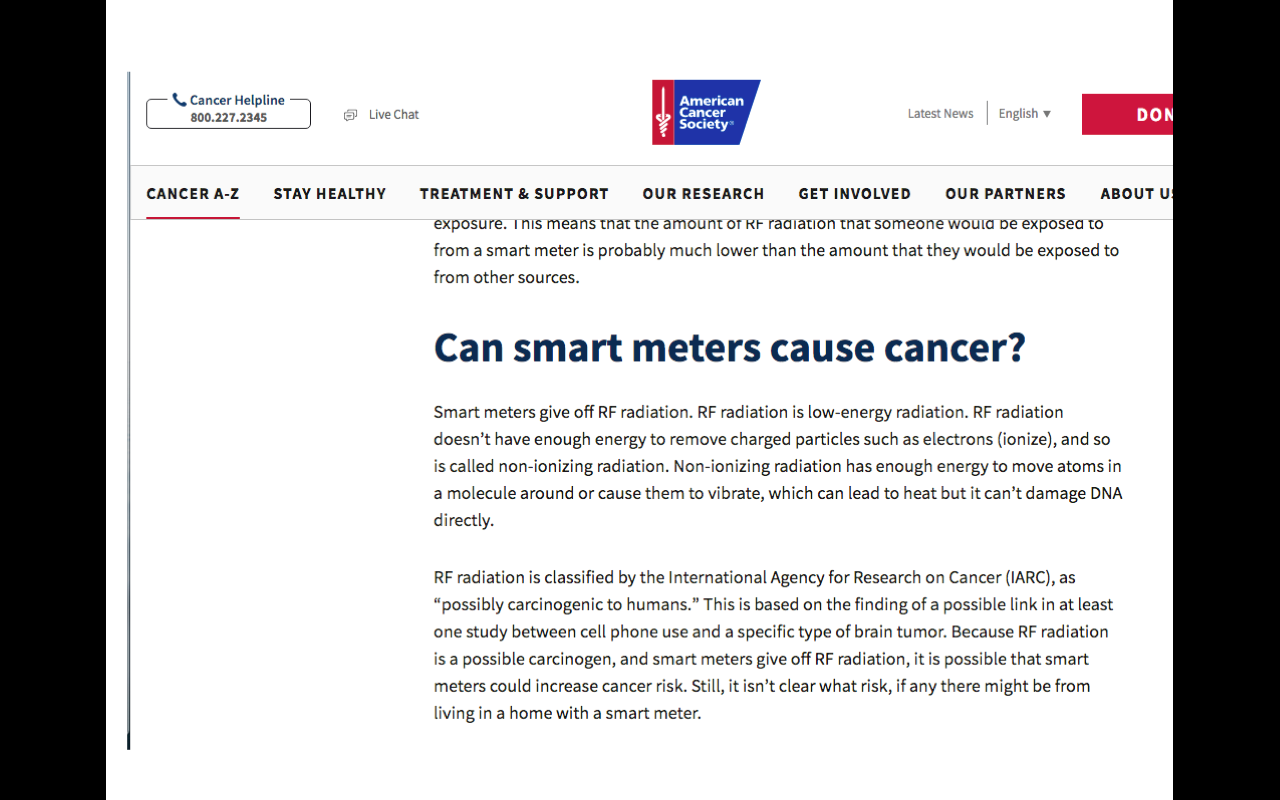 By B.N. Frank
By B.N. Frank
“Smart” Meters (electric, gas, and water) allow utilities to remotely control consumers’ utility use. They also allow utility companies to collect consumer usage data and sell it to 3rd parties including police departments. Problems associated with them include fires, explosions, harmful radiation emissions, mechanical issues, embarrassing technical mishaps, and more.
Opposition to expensive, privacy invasive, ineffective, and hazardous “Smart” Meters has been worldwide since utilities started deploying them. Adding insult to injury, the cost for their installation, maintenance, operation, and replacement is often passed on to consumers. Nevertheless, proponents continue to promote them as beneficial to consumers and essential for “energy efficiency”. Numerous studies have already stated otherwise including a new one. Go figure.
From Utility Dive:
97% of smart meters fail to provide promised customer benefits. Can $3B in new funding change that?
Less than 3% of 2009’s taxpayer- and ratepayer-funded smart meters now deliver full customer benefits, a recent study shows.
An Aug. 30 Request for Information, or RFI, from the U.S. Department of Energy on how best to use $3 billion in infrastructure bill smart grid funding is raising expectations among energy management services providers about a new round of smart meter deployments by utilities across the country.
It is also raising questions about unrealized benefits from 2009’s taxpayer- and ratepayer-funded billion-dollar American Recovery and Reinvestment Act, or ARRA, smart meter investment.
By the end of 2022, there will be over 124 million smart meters installed in 78% of U.S. households, according to data released in April by the Edison Foundation’s Institute for Electric Innovation. But less than 3% of today’s smart meters fulfill 2009 promises of customer savings and that must be prevented in the coming Energy Department-funded deployment, according to a September analysis by Mission:data Coalition.
“Utilities used federal and state funds to deploy smart meters and many explicitly promised to empower customers” to lower bills and earn rewards for supporting system peak demand reductions, said Mission:data President and analysis lead author Michael Murray. “The public policy failure is that utilities benefited from returns on capital expenditures and reduced operational costs but did not deliver those customer benefits,” he said.
There are reasons customer benefits have been limited, utilities said.
“Our web portal allows customers access to historic data and helps them take the steps to obtain near real-time data,” said Fort Collins Utilities Energy Services Manager and Policy Advisor John Phelan. But that “is an impractical, time-consuming process and customers lose interest in it after a few weeks,” he said.
Utilities can streamline real-time data access to enable greater customer and system benefits with “non-discriminatory” and “interoperability” standards, Murray and other smart meter advocates said. But that may compromise concerns of customers and regulators about system security and customer privacy protections, utilities said.
Big potential value
Smart meters are “a key technology” that facilitate “new and expanded services,” an April 2021 Edison Foundation report recognized. They can lead to “smart home energy management, load control, budget billing, usage alerts, outage notifications, and time-varying pricing” as well as improved visibility for system operators, it added.
In California, where regulators require utilities to enable some access to smart meter data, its value was demonstrated during nine system operator alerts for customer usage reduction in early September.
Energy manager OhmConnect’s California customers earned “over $2.7 million,” for reducing dispatch 1.5 GWh during those nine days, its CEO and founder Cisco DeVries said. And Google Nest smart thermostats “reduced usage 72 MW,” Google Nest Head of Energy Partnerships Hannah Bascom reported.
But inadequate real-time data was exchanged between California’s market operator and the state’s many distributed resources, and significant potential capacity was depleted before the most challenging evening peak demand spike, reducing the system benefit the state could have obtained, according to a Bloomberg Sept. 7 report.
Real-time data from smart meters on customer usage is “critically important” to optimizing distributed resources to deliver customer and system reductions, said a June 24 letter to the New York State Public Service Commission, or NYPSC, from advocacy groups. But as in many states, New York customers currently need “expensive and duplicative” equipment to obtain real-time data, the letter said.
Utilities are effectively using granular smart meter data to obtain meter billing data and reduce operational expenses for customer services, but access for customers and third-party energy management services is difficult and costly, DeVries, Murray and others said.

Permission granted by EEI
The problem
Almost 17.4 million ARRA-funded smart meters have been deployed by utilities since the 2009 Energy Department funding by 77 representative investor-owned utilities — 89.7% with real-time data access capability — but only 2.9% were “enabled” by utilities, Mission:data reported. And historical data was accessible in only 14.3%, it added.
Activist Post is Google-Free
Support for just $1 per month at Patreon or SubscribeStar
Of course, “Smart” thermostats are also being promoted as beneficial to consumers and essential to “energy efficiency”. They also allow utility companies to remotely control consumers’ energy use which has already led to undesirable results (see 1, 2). One study stated that smart thermostats provide a tiny bit of energy savings whereas another study revealed the exact opposite. Additionally, research has exposed that smart thermostats could be damaging power grids. Damaging already vulnerable American power grids (see 1, 2, 3, 4, 5, 6, 7, 8) isn’t beneficial to consumers either, right?
Activist Post reports regularly about “Smart” Meters and other privacy invasive and unsafe technology. For more information, visit our archives and the following websites:
- Wireless Information Network
- StopSmartMeters.org
- Smart Meter Harm
- Smart Grid Awareness
- Smart Meter News
- Coalition to Stop Smart Meters
- Physicians for Safe Technology
- Environmental Health Trust
- EMF Safety Network
- Take Back Your Power
- The People’s Initiative
- Americans for Responsible Technology
Become a Patron!
Or support us at SubscribeStar
Donate cryptocurrency HERE
Subscribe to Activist Post for truth, peace, and freedom news. Follow us on SoMee, Telegram, HIVE, Flote, Minds, MeWe, Twitter, Gab, What Really Happened and GETTR.
Provide, Protect and Profit from what’s coming! Get a free issue of Counter Markets today.


Be the first to comment on "Study: “less than 3% of today’s smart meters fulfill 2009 promises of customer savings”; DOE Wants $3B More for Program"